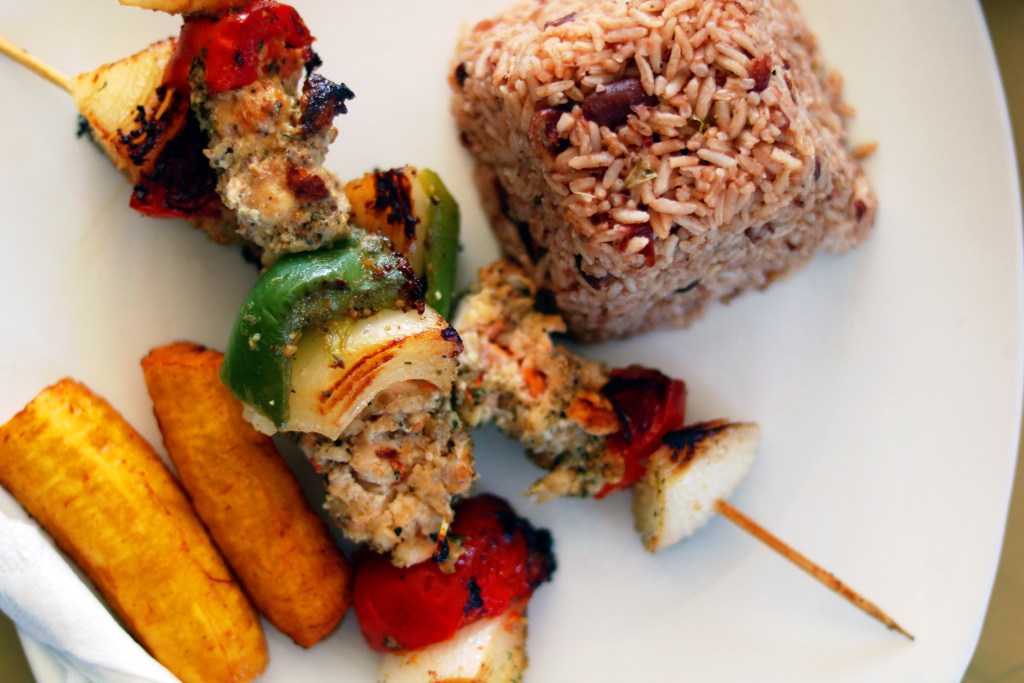From haunted Mayan temples to a rich tradition of herbal medicine, Belize offers something for every witchy traveler.
I spent a week exploring the country from its topaz-colored coastline to the wild corners of the Western jungle. What I learned about this vastly underrated country left me breathless.
And I made the journey with you in mind!
We ventured into a remote botanical garden to learn about traditional herbalism.
And we couldn’t leave without checking out a notorious paranormal location—The Xunantunich Mayan temple.
As a bonus, fresh seafood abounds, and the snorkeling is world class. A perfect destination for the green witch and the sea witch.




Belize Traditional Medicine
Belizian traditional medicine is made up of an eclectic expertise from tribal knowledge around the region.
But unlike Western medicine, the line between medicine and magic is a little blurry.
Which makes it fascinating.
While the Aztec culture recognized the natural origin of illness, some maladies were also attributed to gods or witchcraft.
Blending folklore, tribal history and science, Belizians (and Mayan people in general) came up with some remarkable treatments that continue to interest scholars and the medical community today.
Botanical Gardens



As a student of herbalism and an enthusiastic green witch, I got all giddy when I found out about the little known Belize Botanical Gardens.
Set on 45 acres of lush, meticulously manicured land in the rainforest, the herbalists there come from long lines of indigenous traditions.
With a rich lineage and deep insight into Mayan culture, they patiently answer my many questions.
On my journey through the botanical gardens, my guide drew my attention to several plants in particular that play a key role in Belizian traditional medicine.
Allspice
The ancient Mayans used allspice as an embalming agent. I found this especially curious because modern witchcraft so often associates it with rituals of the dead.
In addition, the leaves of the plant numb the mouth when chewed. It makes a useful anesthetic when applied to the skin or gums.
Calabash
Mayans use calabash in ritual medicine to relieve high blood pressure. Oddly, they also use it ritually to cure hiccups.
Calabash is used to induce menstruation and encourage the expulsion of the placenta after childbirth.
Ylang-Ylang
Prized for its fragrant aroma, even the makes of Chanel #5 included the heady scent of ylang-ylang in their perfume. Herbalists use ylang-ylang as an antimicrobial.
The Xunantunich Mayan Temple

This site is an absolute wonderland for the off-beat travel. We were there for almost 2 hours, and practically had the place to ourselves. Literally, we saw about 10 other people the entire time. And for about 30 minutes, there was no one else at all.
Because of its distant location in the western interior just outside San Ignacio, few tourists venture out this far.
After visiting the herbalists, I wanted to see the source of all this ancient knowledge.
Suddenly and mysteriously abandoned by its relatively large population sometime between 650-800 AD, the Xunantunich temple stands in a remote jungle, abandoned for over a thousand years.
Scholars and archeologists remain at a loss as to why this great city’s people left. Some theorize that an earthquake, famine or epidemic hit. But no artifacts proving any of these theories survived.
The name, Xunantunich, translates to the stone lady.
It references a century old ghost tale. An archeologist first sighted the apparition in 1893, recording that he saw a “Mayan woman” in a long, white dress ascending the staircase. Because she disappears in the stonework on the El Castillo staircase, where the Mayans conducted human ritual sacrifice, many surmise that she fell victim this tradition.
Caye Caulker: For the Sea Witch


We made our final stop with the sea witch in mind.
If you consider yourself a sea witch, work with the Element of Water, or are a water sign, Caye Caulker offers some interesting opportunities to get in touch with your inner sea goddess.
The Belizian barrier reef is the second largest in the world, rivaled only by the Great Barrier Reef in Australia.
We went shark snorkeling. The locals swear to us that the nurse sharks are “as friendly as puppies.” In the same breath, however, they warned us to stay back and not go near the food. Will do, thanks!
This seagull, however, was undeterred.

As a water sign, I enjoyed my guide’s lessons on aquatic life, local folklore and seeing the living versions of the sea shells I use in my water practice.
In particular, the conche lives in abundance. Did you know that in Ayurveda (Indian traditional medicine), conche shells are pulverized and used to treat indigestion?
The meat is also pretty tasty. Not only is it not at risk or endangered, it’s totally normal to free dive off a boat, snatch one up and have it for lunch. Try it with the local salsa. Yum!!

Want to be featured?
Do you run a haunted Airbnb? Promote a women’s retreat, pagan festival or witchcraft related event? Own a ecolodge? Or otherwise want to promote a relevant business on this blog?
Check out Moody Moon’s guidelines for travel features and apply today!



I am fascinated by this. Thank you
You’re welcome! I love this stuff, too.